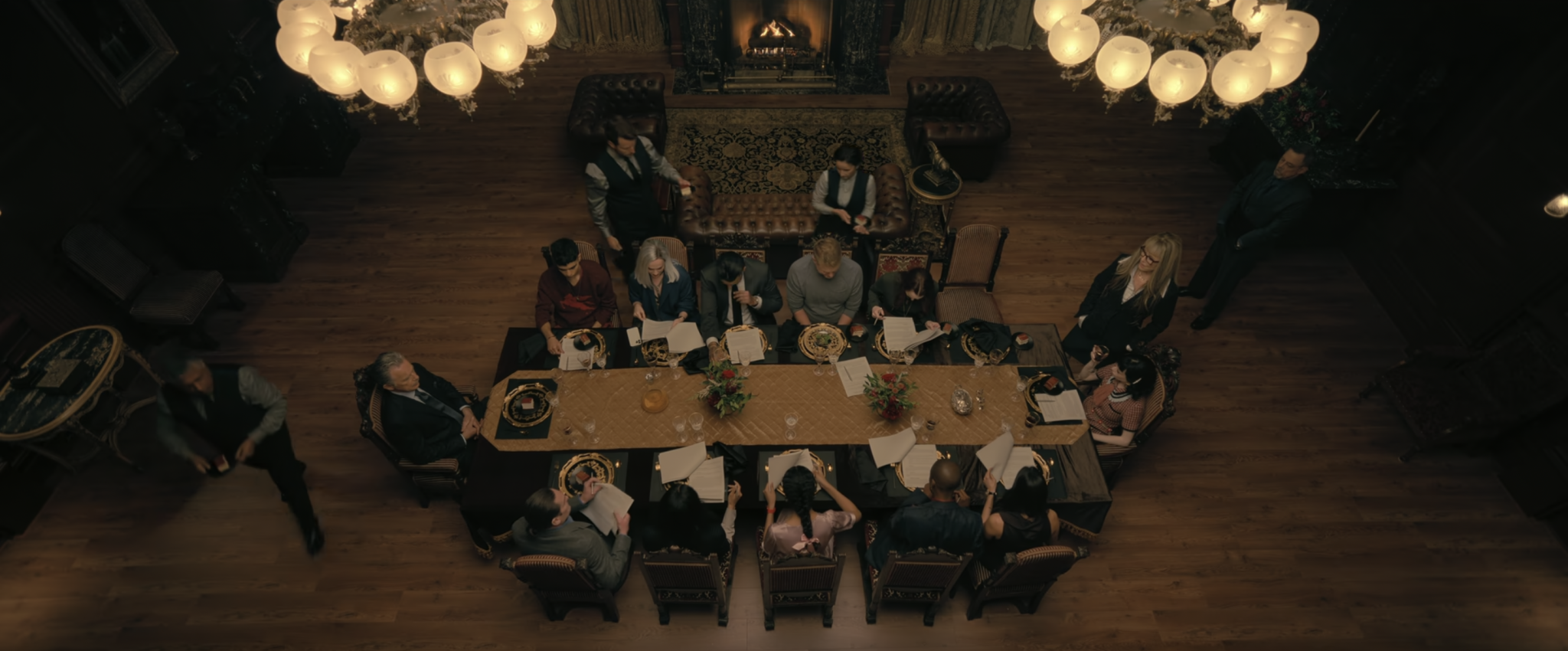Here are all the 9 stories Mike Flanagan’s The Fall of the House of Usher draws inspiration from, making it one of the best book-to-screen adaptations of 2023!
The horror maverick Mike Flanagan is back with a brand-new Netflix miniseries The Fall of the House of Usher, this time diving deep into the Gothic macabre world of Edgar Allan Poe. Weaving together themes and plot details from a wide variety of Poe’s literary works, Flanagan has created a chilling critique of contemporary capitalist culture, where the consequences of unrestrained greed and rampant hedonism come back to haunt you in the most terrifying forms. As hinted by the title, the series depicts the Usher household coming to ruin when a mysterious figure begins persecuting the family members as vengeance for the actions of Roderick (Bruce Greenwood) and Madeline Usher (Mary McDonnell) and their family on their way to becoming unscrupulous billionaires.
Although The Fall of the House of Usher is filled with references large and small to many of Poe’s tales and characters, in this article, we’re going to discuss the nine Edgar Allan Poe stories which have made key narrative contributions to the plotline of Flanagan’s series. Most of the other nods and borrowings – such as lines from Poe’s poetry being recited across the series, or the plot of Poe’s only complete novel, The Narrative of Arthur Gordon Pym of Nantucket (1838), being the backstory of the Ushers’ attorney Arthur Gordon Pym (Mark Hamill) – don’t do much to influence Flanagan’s storytelling choices, and as such they’re left out. Alongside Poe’s stories, the way they’ve been incorporated into the series narrative is also discussed. Needless to say, then, spoilers ahead!
The Fall of the House of Usher
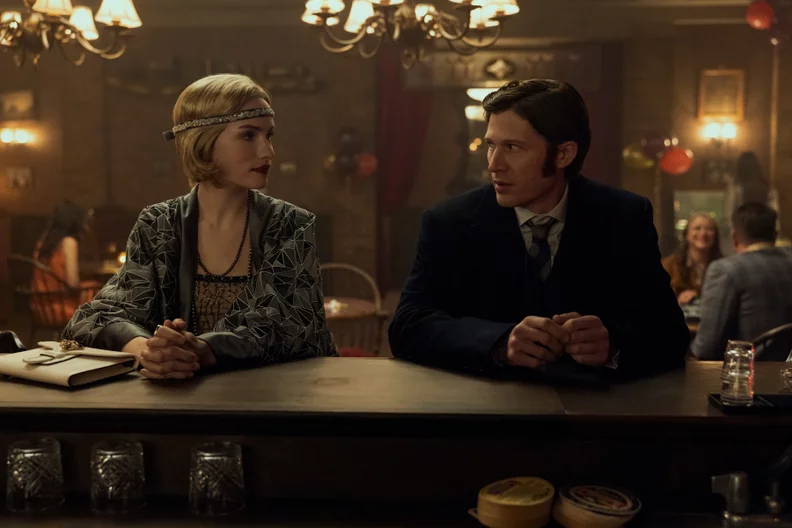
Poe’s 1840 short story The Fall of the House of Usher is the central source of inspiration for Flanagan’s miniseries, although the adaptation borrows little plot-wise from the former. In the original, Roderick and Madeline Usher are the last remaining members of the Usher family, both sickly and nearing death as they languish in their old, gloomy family home. The unnamed narrator of the tale was invited by Roderick to help with his illness, and upon arrival, he noticed a hairline crack running down the face of the building from its roof to the adjacent lake. Roderick sings and plays the guitar and amuses his guest with his theory of why he believes their house might be alive and sentient and eventually lets slip his real intentions: his sister Madeline has died, and he needs help entombing her so that grave robbers don’t steal her body.
In the week following their deed, Roderick grows increasingly hysterical and anxiety-ridden and starts seeing things, eventually declaring one day that they’d entombed his sister while she was still alive. Madeline escapes from her tomb all bloodied and corpselike, attacking the ailing Roderick – who dies of shock – while her own life leaves her body as the House of Usher splits at the seams and crumbles into the lake. Aside from the live entombing and the siblings dying together (and taking the family home down with them), Flanagan’s version also retains the original Roderick Usher’s self-torturing psyche, where repressed fear and guilt return to haunt him by manifesting as symptoms of illness. In the series, it’s the cerebral disease CADASIL that affects the drug-baron Roderick, leading to hallucinations that stage a forced confrontation with his guilt. Meanwhile, the unnamed narrator visiting the crumbling House of Usher in the story is paralleled by the investigator C. Auguste Dupin (Carl Lumbly), invited by Roderick to record his confession.
The Masque of the Red Death

As the mysterious plague Red Death sweeps across the land, Prince Prospero throws a masquerade ball in his castellated abbey, where he and his fellow nobles are sheltering themselves. The doors are welded shut to prevent anyone from entering or exiting so that Prospero’s guests can enjoy knowing themselves safe from the disease. There’s a large ebony clock that ominously chimes to mark each passing hour, breaking up the revelry for a few moments until the chiming stops, and at the stroke of midnight, the merrymakers notice a strange figure, “tall and gaunt, and shrouded from head to foot in the habiliments of the grave”. It’s as if this person had dressed up as the Red Death itself, mocking these aristocrats by embodying that which they’d been hiding from.
Prospero is outraged by the appearance of this strange guest and pursues them with a dagger across the seven differently-coloured chambers in his abbey, reaching the final room decorated in black and illuminated bloody scarlet. However, as soon as the figure turns to face him Prince Prospero drops dead, and his guests soon follow, all exhibiting the gruesome symptoms of the plague. In Flanagan’s version, Prospero “Perry” Usher (Sauriyan Sapkota) is the youngest of Roderick Usher’s children and similarly hosts a masquerade where a mysterious figure appears out of nowhere “like a thief in the night”, wearing a skull mask signifying death. The plague, however, is replaced by highly corrosive acid raining down from sprinklers overhead.
The Murders in the Rue Morgue
Published in 1841, before the word ‘detective’ was even coined, The Murders in the Rue Morgue featured the appearance of C. Auguste Dupin, the first detective figure in the history of literary fiction. It tells the story of a double murder that Dupin investigates, where Madame L’Espanaye and her daughter Camille were found dead in their home at Rue Morgue, a street in Paris. Witnesses reported hearing two voices around the time of the murders, agreeing that one of them was French but without any consensus as to the language spoken by the other voice. The lack of a consensus regarding the language of the second voice leads Dupin to suspect that it might not have been a human voice at all.
Dupin’s suspicions are strengthened when he finds a few unusual tufts of hair at the crime scene, and he’s proven right when it turns out that the killer was an orangutan, whose owner had lost control of the animal. In the series, the orangutan is replaced by a chimpanzee, which kills Camille L’Espanaye (Kate Siegel), one of Roderick Usher’s daughters. The venue of the “murder” happens to be R.U.E. Clinical Research – the initials standing for “Roderick Usher Experimental”, also referred to by Camille as the “Rue Zoo” or “Rue Morgue” – where Victorine LaFourcade (T’Nia Miller), the eldest of Roderick’s illegitimate children, was experimenting on primates to develop a heart mesh device.
Also Read: Complete Cast & Characters Explained
The Black Cat
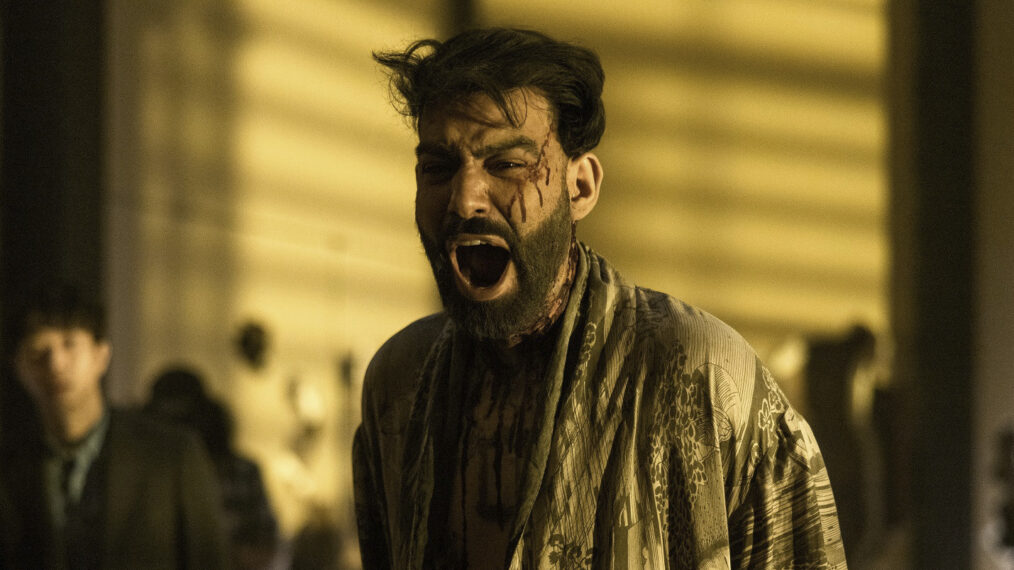
Forming the basis for the fourth episode in Flanagan’s series, Edgar Allan Poe’s The Black Cat tells of an unnamed alcoholic narrator and his large, black pet cat, Pluto. Following a night of heavy drinking, the narrator grabs Pluto and gets bitten on his hand, which drives him to such rage that he takes out one of the cat’s eyes. Pluto is now terrified of his owner and keeps avoiding him, but one day, the narrator’s anxiety-ridden fury drives him to hang the cat by the neck from a tree, where it dies. The narrator is guilt-stricken but soon finds another black cat at a tavern, a lookalike of Pluto’s with a missing eye to boot but with a patch of white fur on its chest, which Pluto didn’t have. As the cat keeps reminding the narrator of his guilt, he begins loathing the creature and, to his horror, finds that the white patch of fur is starting to resemble the gallows.
With an axe, he tries to kill the cat but accidentally ends up killing his wife, who was trying to stop him and hides her body behind a cellar wall. Unbeknownst to him, however, he has also walled up the black cat with the corpse, and when the police come knocking a few days later, the cat’s howling alerts them of the crime. In the series, the alcoholic is replaced by the drug junkie Napoleon “Leo” Usher (Rahul Kohli), another of Roderick’s illegitimate children, who is at the receiving end of the torment unleashed by a black cat that he adopts to replace their pet Pluto (who is killed in mysterious circumstances). Like in the story, Leo gouges an eye out from this cat, but instead of an axe, he wields a replica of Thor’s hammer with which he demolishes the walls, trying to catch the animal. Unlike Poe’s story, though, Pluto’s replacement in the TV series isn’t a real cat but rather a hallucination borne of guilt, which pushes Leo to his death.
The Tell-Tale Heart
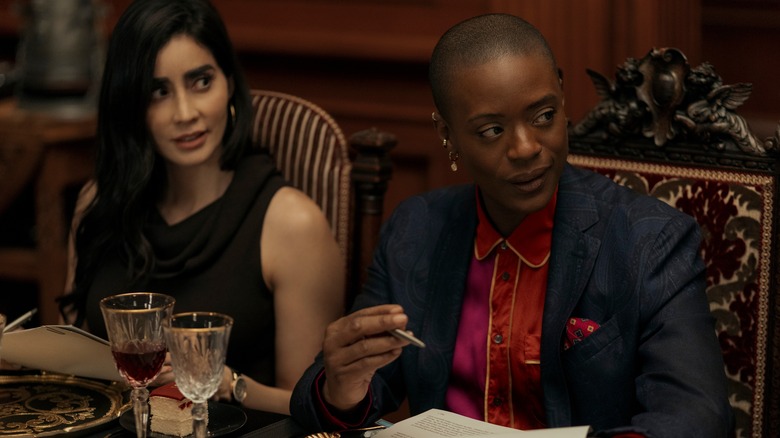
One of Poe’s best-known short stories, The Tell-Tale Heart is a classic tale of repressed guilt resurfacing in horrifyingly “real” forms – which also echoes the central theme of Flanagan’s series. It’s told in first person by an unreliable narrator suffering from an “over-acuteness of the senses”, who ends up killing an old man he used to live with, the man’s “vulture-like eye” distressing him to the point of murder. He covers all traces of his act by meticulously cutting up the corpse and hiding the pieces under the floorboards. Yet when the police arrive, alerted by a neighbour who heard the old man’s dying scream, the narrator’s self-assuredness crumbles as he starts hearing the thumping of a beating heart. This sound, audible only to him but not to the police, grows steadily louder and drives the narrator crazy to the point that he confesses to his foolproof crime.
It’s this sound of a beating heart, simultaneously real and imagined, that also haunts Victorine “Vic” Usher in the series after she accidentally kills her wife and co-worker, Dr Alessandra “Ali” Ruiz (Paola Nuñez). We’ve already heard Camille and her associates suspecting Vic of cutting up corpses of the dead apes she was experimenting on and disposing of them, echoing Poe’s character. Wracked by guilt and stuck in denial over her spouse dying, Vic uses the experimental heart mesh she was developing on Ali’s dead heart, which has long since stopped beating. The squelching thump of this artificially induced heartbeat, a fittingly perverse tribute to human attempts at overriding natural limits, drives Vic to the depths of despair as she takes her own life.
William Wilson
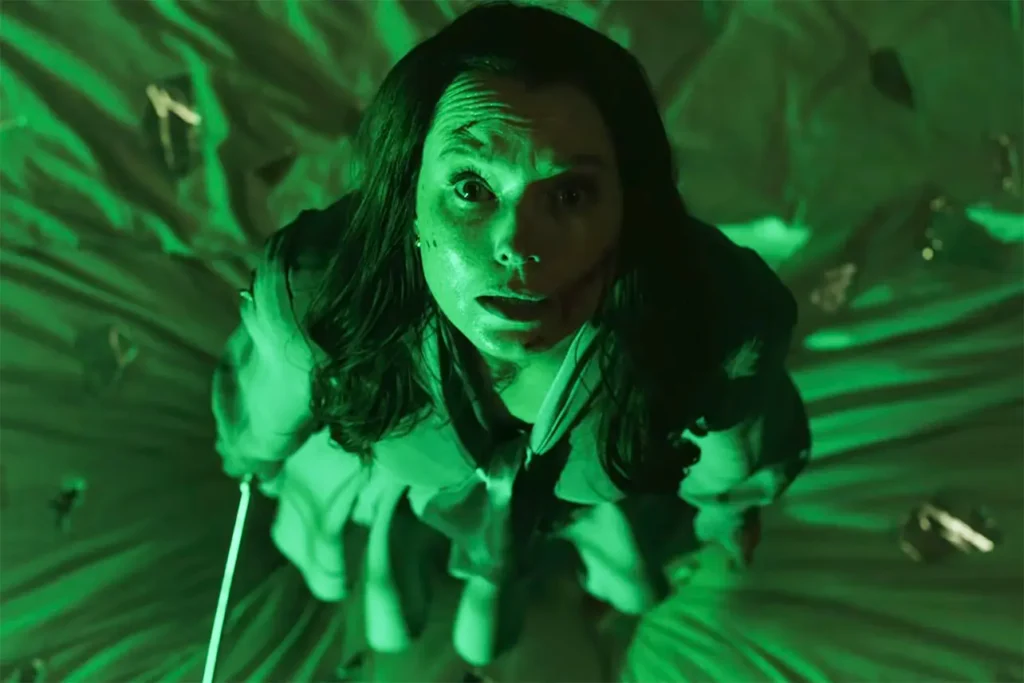
Although the sixth episode in Flanagan’s The Fall of the House of Usher is titled “Goldbug”, its plot has nothing to do with Poe’s 1843 short story “The Gold-Bug” about a cryptographic treasure hunt, aside from the titular reference to the Ushers’ wellness program and its logo. Rather, the episode’s events are inspired (partly) by another Poe story called “William Wilson”, about a man who’s haunted all his life by his doppelganger. William meets a boy at school with the same name as his and with roughly the same appearance, whose presence begins tormenting William. One night, sneaking into this double’s bedroom, William discovers in horror that the other boy’s face has started to resemble his own.
The terrified William leaves the academy, only to be followed wherever he goes by the other William, all his efforts getting sabotaged by his lookalike. Flanagan uses the same concept with Tamerlane Usher (Samantha Sloyan), Roderick’s eldest daughter working to launch the Goldbug wellness program, who keeps encountering her double on the day of the launch and has her plans thwarted by this apparition. Her fate is similar to that of William Wilson from Poe’s story, as both of them try to kill their doppelganger – materializing in front of them as their mirror image – and only end up killing themselves. Tamerlane’s husband in the series, not coincidentally, is named William Wilson (played by Matt Biedel).
The Pit and the Pendulum
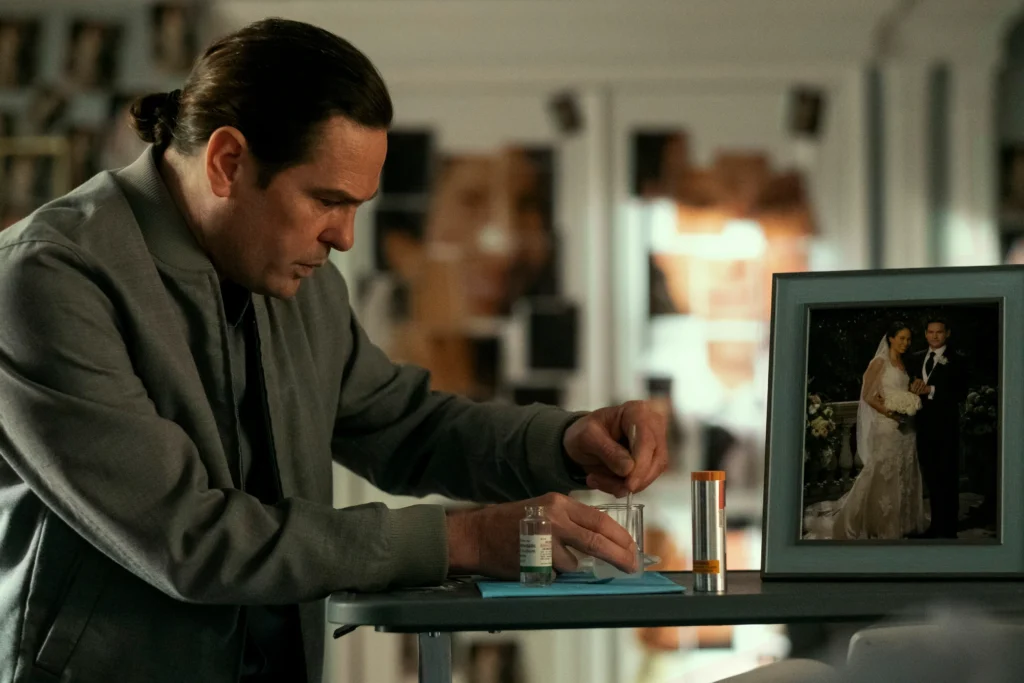
One of Poe’s most dread-inducing short stories, The Pit and the Pendulum tells the story of a man taken prisoner by the Spanish Inquisition and sentenced to die. The tale is narrated from the prisoner’s perspective as he wakes up in a pitch-dark cell whose size he tries measuring by pacing across the room. Fortunately (or unfortunately) for him, he trips and falls by the edge of a yawning pit in the middle of his cell, saving him from falling into it and dying. The prisoner passes out and wakes up later to find himself strapped to a wooden block and facing the ceiling, from which hangs a large pendulum with a foot-long blade at its edge.
With his cell now faintly illuminated, the prisoner witnesses the swinging blade being lowered upon him, bringing with it not only an inevitable death but also the horrific anticipatory agony of experiencing your flesh being hacked to bits by the contraption. He has one tiny glimmer of hope: attracting the rats in his cell by covering himself with the leftover meat that was served to him, hoping the rodents chew through his straps before the blade fully drops. It’s this central gruesome imagery of death descending upon a helpless, paralyzed victim that Flanagan recreates in the eponymous episode. This time, it’s Roderick’s eldest son, Frederick Usher (Henry Thomas), who’s undone by accidentally ingesting the same paralytic drug he was using to torture his wife Morella (Crystal Balint), mistaking it for his stash of cocaine.
Related to Mike Flanagan: Midnight Mass (2021) – A Profound Exploration Of Theism And Atheism By Mike Flanagan
The Cask of Amontillado
Published in 1846, The Cask of Amontillado tells the story of a nobleman, Montresor, who vows to take revenge upon a man named Fortunato (the reference for the name of the Ushers’ pharmaceutical company in the series). His reasons for seeking revenge are kept largely ambiguous, with hints suggesting that Fortunato may have caused the downfall of Montresor’s family. Fortunato loves his alcohol and is supposedly a wine connoisseur, a fact that Montresor exploits by inviting him to sample the Amontillado wine he has recently purchased. Montresor keeps his victim inebriated with a steady supply of alcohol as the two of them descend into the catacombs below his house to get to the alleged wine cellar.
Once they arrive, the drunk and unsuspecting Fortunato is lured into a trap where Montresor chains him and begins walling him up with brick and mortar that he had previously kept stockpiled there, echoing Roderick Usher’s live burial of his sister. Scholars have speculated that Poe may have written The Cask of Amontillado out of a real-life desire for revenge against his literary rivals. One such rival was the American critic Rufus Wilmot Griswold, whose name inspired the character of ex-Fortunato CEO, Rufus Griswold (Michael Trucco) in the series, who also gets walled up and left to die by a younger Roderick (Zach Gilford) and Madeline (Willa Fitzgerald). Like in Poe’s story, the two Usher siblings lure the unsuspecting Rufus down into a basement by serving him Amontillado, motivated by the desire to exact revenge for Rufus’ prior abuse of power over them.
The Raven
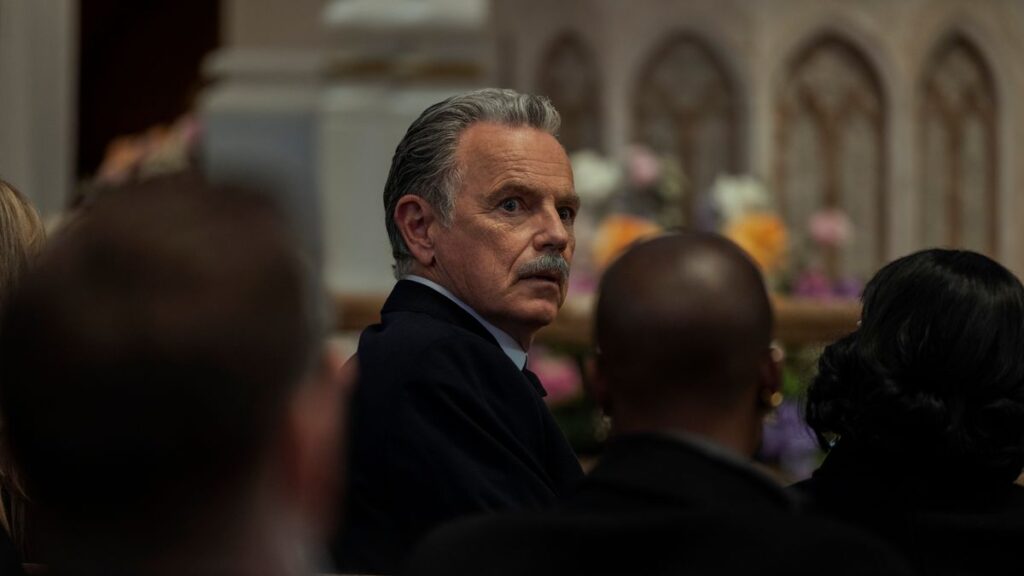
Not a short story like the others in this list but rather a narrative poem, Edgar Allan Poe’s The Raven is the inspiration behind the central antagonistic figure Verna in Flanagan’s The Fall of the House of Usher. The poem’s famous opening line, “Once upon a midnight dreary…” provides the title for the first episode, while the series finale, titled “The Raven”, ties the narrative together with elements from Poe’s text. In the poem, an unnamed narrator is reading old books in the middle of the night to forget his sorrow over the death of his beloved, Lenore, when he’s visited by “a stately Raven of the saintly days of yore”.
When the narrator asks the bird its name, he’s surprised to hear the raven respond, “Nevermore”, which quickly turns out to be the bird’s only word, the way it responds to every question. Eventually, after deeming the raven a “thing of evil” and a “prophet”, the narrator asks whether he will ever be reunited in heaven with his lost Lenore. Receiving the same answer – “Nevermore” – yet again, the narrator is infuriated with the bird and orders it to leave, but the raven remains perched upon his chamber door, unmoving. In the TV series, Roderick Usher is seen similarly lamenting the loss of his granddaughter Lenore (Kyliegh Curran) when a raven flies into his room and stays “perched upon a bust of Pallas”.
In Poe’s poem, the bird arrives as a reminder of Lenore’s death, forcing the narrator to confront his loss at a moment when he was trying to forget the same. Whereas in the series, the demonic entity Verna (Carla Gugino), her name an anagram of ‘Raven’, stages a confrontation between the Ushers and the consequences of their actions, forcing upon Roderick the loss of his children. When a young Roderick mentions how ravens are believed to be “minions of Satan”, Verna tells him that the same isn’t true for every culture, that some even believe that ravens can bring good fortune. This is proven true in the most twisted fashion as Verna orchestrates the downfall of Roderick and his family, her actions indeed turning the tide of fortune for the millions suffering from the actions of the Ushers and their pharmaceutical company.

